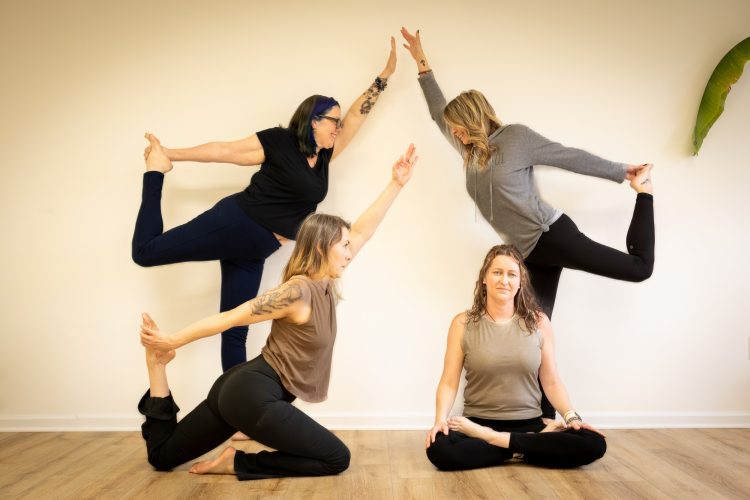In an age where the demands of modern life stretch both body and mind to their limits, yoga has emerged not only as a spiritual tradition but as a scientifically-backed practice with measurable effects on physical and mental health. Unlike fitness trends that isolate muscle groups or quick-fix mental wellness strategies, integrative yoga offers a holistic approach—unifying movement, breath, mindfulness, and inner awareness. This article explores how integrative yoga is tailored to address a wide range of health concerns, from chronic pain to anxiety, and how its combined physical and psychological benefits form the cornerstone of a well-rounded, preventative, and therapeutic healthcare strategy.
What Is Integrative Yoga?
Integrative yoga is not merely a sequence of postures. It is a comprehensive system that blends asanas (physical poses), pranayama (breathing techniques), dhyana (meditation), and ethical principles drawn from classical yogic philosophy. The “integrative” component refers to its design—yoga adapted to the individual’s physiological, psychological, and spiritual needs, often supported by evidence-based medical frameworks. This makes it ideal for use in wellness settings, physical rehabilitation programs, mental health therapy, and even palliative care.
Unlike general yoga classes that prioritize flexibility or stamina, integrative yoga often includes modifications and personalized instruction, making it accessible to those recovering from injury, managing chronic illness, or facing emotional trauma. It’s not about mastering headstands; it’s about reconnecting the fragmented parts of self—body, mind, breath, and awareness—to build resilience and healing from within.
The Science Behind Movement and Mindfulness
The dual pillar of integrative yoga—movement and mindfulness—activates a cascade of beneficial neurophysiological processes. Physically, asanas promote musculoskeletal alignment, enhance circulation, stimulate lymphatic flow, and improve posture and mobility. This has direct implications for individuals suffering from arthritis, scoliosis, back pain, and cardiovascular concerns.
On the mental health front, mindfulness and breathwork regulate the autonomic nervous system, shifting the body from a sympathetic (fight or flight) state into a parasympathetic (rest and digest) mode. This change lowers cortisol levels, reduces systemic inflammation, and improves heart rate variability—markers closely tied to stress resilience and emotional stability.
MRI and EEG studies show that regular yoga practitioners exhibit increased gray matter density in brain regions responsible for self-awareness, compassion, and emotional regulation. These neurological adaptations can alleviate symptoms of depression, anxiety, PTSD, and even addiction.
Yoga as Preventative Medicine
Integrative yoga shines not only as a remedy but as a tool for prevention. By cultivating bodily awareness, individuals learn to detect early signs of stress, tension, or fatigue and adjust their behavior accordingly. For example, mindful breathing can preempt a panic attack. Gentle stretching can alleviate the tightness before it morphs into chronic pain. Meditation can stop a negative thought spiral before it becomes a depressive episode.
In workplaces, schools, and hospitals, integrative yoga is increasingly used to prevent burnout, boost immunity, and enhance cognitive function. Programs like yoga therapy for cancer survivors, trauma-informed yoga for veterans, and prenatal yoga for maternal wellness exemplify its growing medical relevance.
Targeted Benefits for Physical Health
Chronic conditions often involve more than one system of the body, and integrative yoga addresses this interconnectedness. For example, individuals with diabetes benefit not only from improved insulin sensitivity through physical activity but also from stress reduction via meditation, which stabilizes blood glucose levels. Patients with chronic back pain report significant improvement through gentle stretching, spinal alignment, and improved core engagement.
Respiratory conditions such as asthma and COPD improve with pranayama techniques that strengthen diaphragmatic control and reduce anxiety-induced breathlessness. Yoga nidra—a form of guided yogic sleep—helps reduce blood pressure and improve heart function in hypertensive patients.
Cancer patients undergoing chemotherapy experience reduced fatigue, better sleep, and improved emotional resilience through restorative yoga sessions. Even autoimmune conditions such as rheumatoid arthritis and lupus benefit from the inflammation-lowering effects of regular gentle practice.

Addressing Mental and Emotional Health
One of integrative yoga’s most profound impacts lies in the realm of emotional healing. The body stores trauma in the form of muscular tension, dysregulated breathing, and nervous system imbalance. Through mindful movement and breath awareness, individuals learn to safely release held emotions and reestablish a sense of internal control.
Trauma-sensitive yoga approaches avoid physical touch, offer choices in poses, and encourage students to move at their own pace—helping survivors of abuse or PTSD rebuild a positive relationship with their body. Regular meditation and breathwork foster neuroplasticity, rewiring the brain away from fear responses and toward emotional regulation.
Depression often manifests as lethargy, disconnectedness, and rumination. Integrative yoga counteracts this through gentle activation, embodied presence, and breath-centered awareness, which reorient attention from repetitive thought loops to immediate sensory experience. Similarly, anxiety, characterized by mental overstimulation and physiological arousal, is soothed by slow, rhythmic breathing, grounding postures, and meditation techniques like body scanning or mantra repetition.
Yoga in Clinical Settings
Integrative yoga is now incorporated into many medical treatment plans. Hospitals offer yoga therapy as part of pain management, cancer rehabilitation, cardiac recovery, and mental health programs. Psychiatric facilities use yoga to complement medication and talk therapy, while rehabilitation centers implement yoga to address substance dependency, trauma, and relapse prevention.
Research shows that patients recovering from surgery or intensive care experience faster recovery times, reduced need for analgesics, and improved mental health with yoga interventions. Moreover, yoga’s non-invasive nature makes it safe for a wide demographic—from children with ADHD to seniors dealing with osteoporosis or Alzheimer’s disease.
Therapists and physicians working with yoga professionals find that patients who engage in integrative yoga are more likely to follow treatment plans, develop self-care routines, and report higher levels of satisfaction with their health outcomes.
Customizing Practice for Individual Needs
No two bodies or emotional landscapes are alike, and integrative yoga respects this diversity. A yoga therapist conducts a thorough assessment—reviewing medical history, lifestyle, emotional state, and movement limitations—to design a personalized plan. For someone with fibromyalgia, the emphasis may be on gentle restorative poses and breathing to manage pain and fatigue. For someone with anxiety, faster-paced vinyasa followed by calming breathwork may be more effective.
Adaptive yoga tools like chairs, bolsters, straps, and blankets help make the practice accessible to all. Sessions may be held in group settings, one-on-one, or online. This flexibility ensures that integrative yoga is inclusive, non-competitive, and sustainable.
Daily Integration and Long-Term Sustainability
Unlike sporadic gym sessions or one-off therapy visits, integrative yoga is meant to be a lifelong practice—woven into daily life. A 10-minute morning stretch, mindful breathing at lunch, or a few minutes of meditation before sleep are all ways to maintain consistency. The long-term benefits compound: reduced inflammation, better sleep, improved digestion, emotional resilience, and enhanced quality of life.
Encouragingly, the barrier to entry is low. All that is needed is a quiet space, a few minutes, and the willingness to connect inward. With time, yoga becomes not just something you do—but part of who you are.
Conclusion: A Path to Whole-Person Healing
Integrative yoga is not a cure-all, but it offers something many modern treatments do not: a space where physical, emotional, and spiritual dimensions are addressed simultaneously. It is a dynamic, evidence-supported, and inclusive practice that aligns ancient wisdom with modern healthcare. Whether as a preventative measure, a complementary therapy, or a route to personal transformation, integrative yoga empowers individuals to become active participants in their own healing.
In a world increasingly fragmented by stress, illness, and disconnection, integrative yoga invites us to return to wholeness—one breath, one posture, and one moment of awareness at a time.











































